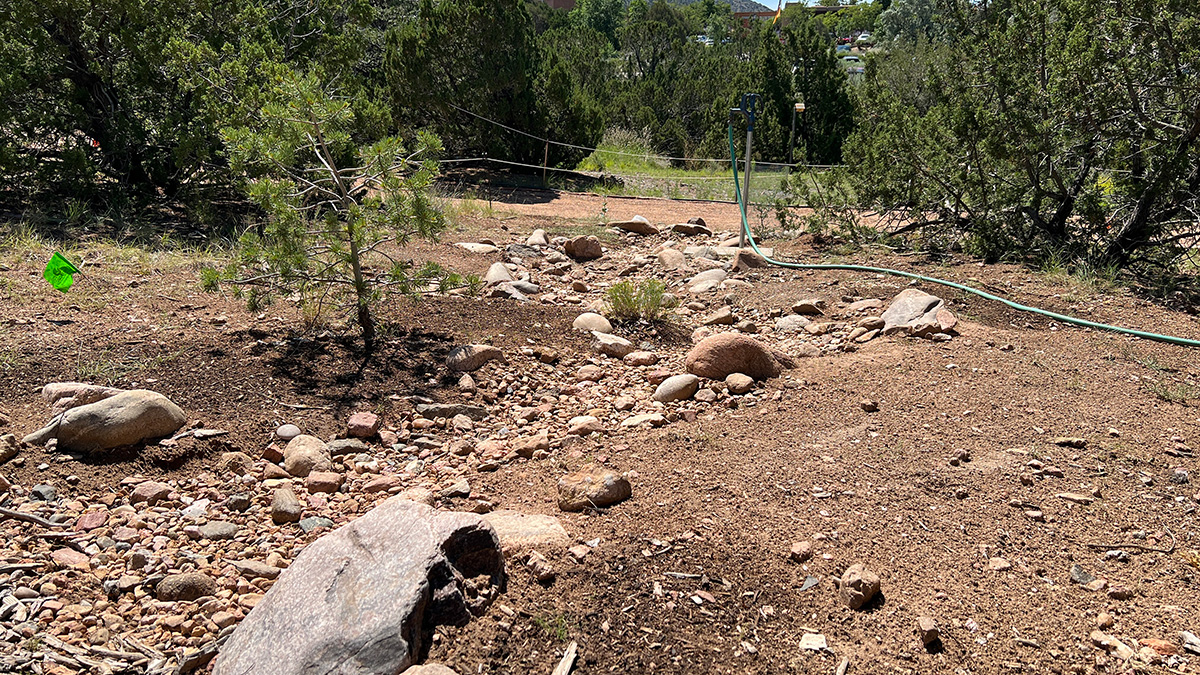We’ve enjoyed the company and the work of two super interns at the SFBG this summer. Elena Jordan is our intern with the Linda Milbourn College Internship Program, and Sophia Buchan is our Santa Fe Schools Work Based Learning Intern.
From late June through mid-July, Sophia and Elena created a new feature in the Piñon-Juniper Woodland, a short section of “dry stream bed” to passively catch and slow runoff from the mulched path to the main trail into the PJW.
The two young women, with help from Horticulture Assistant Noah Gapsis and a little guidance from Horticulture Director Linda Churchill, roughed in a curving path for rainfall to follow as it runs downhill. They then installed a series of small boulders along the curves of the water’s path, mimicking the placement of rocks in a natural stream or arroyo. These larger rocks were buried into the soil for stability and natural effect—no “rocks from space”! These larger rocks give definition to the channel, holding the stream bed both physically and visually. Some of the boulders were even placed jutting into the water path or smack in its middle, to further mimic nature as well as to break up and slow down energetic water flows.
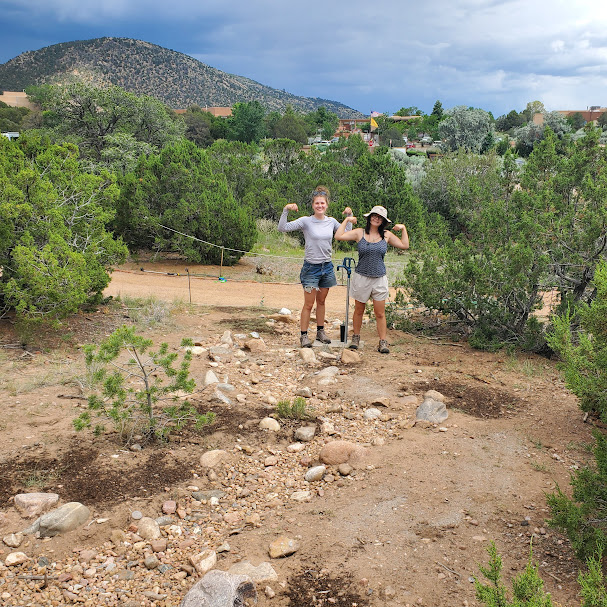
“I assisted in selecting and placing the rocks used to construct the dry creek bed and digging out a center channel to guide the water. We aimed to create a functional system that could handle New Mexico’s monsoon rains while looking as natural as possible, and I believe we succeeded!” – Elena
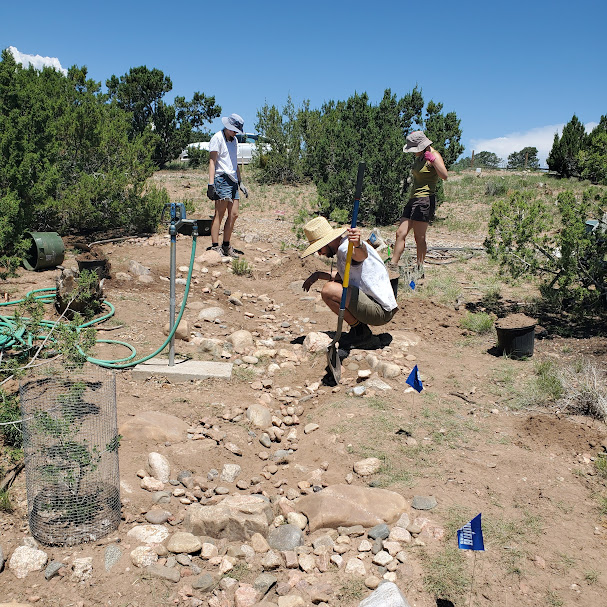
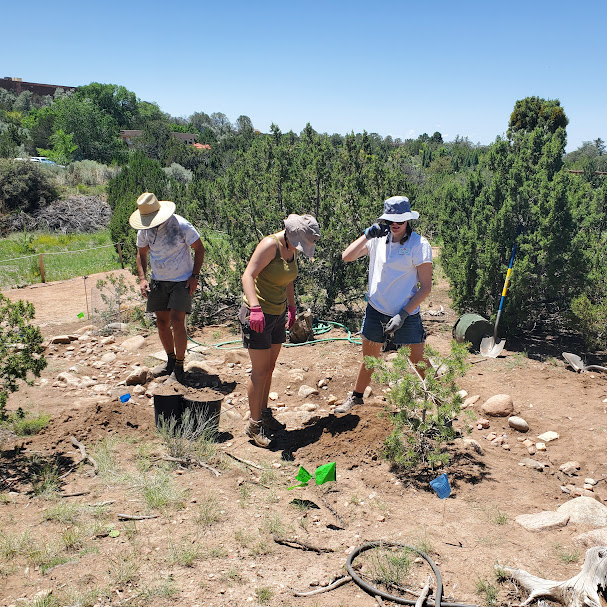
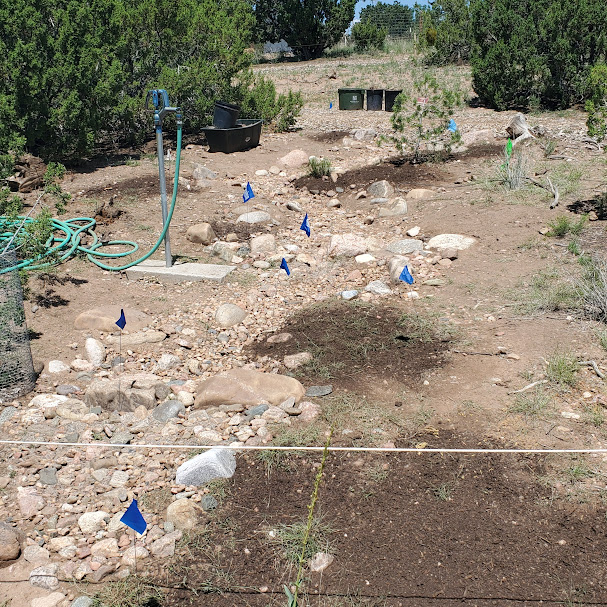
With the outlines in place, the interns created a more defined channel by removing a couple inches of soil along the channel center. Then native “cobble” (rocks about the size of a fist) was placed to further define the edges, break up water flow, and help hold the soil in place. A top dressing of ¾” gravel created an arroyo floor to help hold soil and moisture in place.
Noah helped complete the project by seeding in and around the new feature using seeds donated by the Institute for Applied Ecology (insert link to the blogpost about that seed donation).
Planting during the monsoons should help germination, and the grasses and other plants will grow stronger with the moisture this project will hold longer on the sloped area. The plants, helped by the rock work, will ultimately become the long-term erosion control that plant roots do better than any built structure.
All the materials used for this project were donated or found on site, and Elena and Sophia had to move a lot of heavy materials and tools. They worked without complaining for several weeks in the hot July sun but it was more than hard work.
The dry stream bed has been a collaborative process that both women approached with creativity, vigor and good nature, cheerfully doing whatever was needed to accomplish each step. Their final creation is a handsome and functional addition to the Pinon Juniper Woodland.
“At first, I couldn’t see the vision of the dry stream bed. After we did some more rock moving and trench digging I began to see what it would become. Overall, I’m happy with the finished product and believe it will help to direct water from the heavy rains down to the arroyo below” – Sophia
